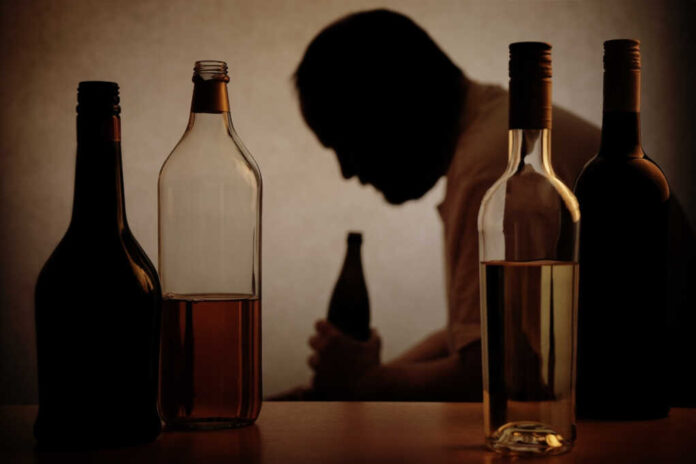
Alcohol-related cancer deaths have doubled in the United States since 1990, yet most Americans remain unaware of the direct link between alcohol consumption and cancer risk.
At a Glance
- Alcohol-associated cancer deaths in the U.S. doubled from 11,896 in 1990 to 23,207 in 2021
- Men and individuals over age 55 face significantly higher mortality rates from alcohol-related cancers
- Alcohol increases risk for at least six types of cancer including breast, liver, colorectal, and esophageal
- Less than half of Americans are aware that alcohol consumption increases cancer risk
- Even low to moderate alcohol consumption (less than 1.5 drinks daily) accounts for 26-35% of alcohol-attributable cancer deaths
The Growing Impact of Alcohol on Cancer Mortality
A recent study reveals a troubling trend in American public health: deaths from alcohol-related cancers have risen dramatically over the past three decades. In 1990, approximately 11,896 Americans died from cancers attributed to alcohol consumption. By 2021, that number had surged to 23,207 deaths, representing a 95% increase. This stark rise has occurred despite general improvements in cancer treatments and survival rates for many types of cancer, highlighting alcohol as an increasingly significant yet underrecognized contributor to cancer mortality in the United States.
The demographic patterns of these deaths reveal important insights. Men have experienced a 70.2% increase in alcohol-related cancer deaths compared to a 15.2% increase among women. In 2021, alcohol was responsible for 4.2% of all cancer deaths in men and 1.85% in women, up from 2.5% and 1.46% respectively in 1991. Geographic variations are also notable, with Washington, D.C. reporting the highest alcohol-related mortality rate while Utah recorded the lowest. New Mexico has experienced the most significant increase in these deaths across the study period.
Harris gets an A+ — but it still on track to lose; 6 things Harris needs to do to win
———-
A two-hour documentary and a one-hour conversation today have me thinking about one word and two sets of three words that I think will determine the outcome of the election.Allow…
— Whitney Tilson (@WhitneyTilson) July 29, 2024
Understanding Alcohol’s Carcinogenic Mechanisms
The International Agency for Research on Cancer classifies alcohol as a Group 1 carcinogen, placing it in the same category as tobacco and asbestos. When consumed, alcohol breaks down in the body to form acetaldehyde, a toxic compound that damages DNA and prevents cells from repairing this damage. Additionally, alcohol facilitates the absorption of other carcinogens into the body’s tissues and disrupts hormone regulation, particularly estrogen, which can increase breast cancer risk in women. These biological mechanisms explain why alcohol consumption contributes to multiple types of cancer.
The cancers most strongly linked to alcohol consumption include liver cancer, breast cancer, colorectal cancer, esophageal squamous cell carcinoma, and certain head and neck cancers. Liver cancer represents the most serious risk, especially for those 55 and older. For women, breast cancer accounts for 56-66% of alcohol-attributable cancer deaths, while upper airway and esophageal cancers are more common among men (53-71% of alcohol-related cancer deaths). Each alcohol-attributable cancer death results in an average of 17-19 years of potential life lost.
The Awareness Gap and Public Health Implications
Despite strong scientific evidence linking alcohol to cancer, public awareness remains alarmingly low. Less than half of Americans recognize alcohol as a cancer risk factor, creating a significant knowledge gap that hampers prevention efforts. This contrasts sharply with widespread awareness of tobacco’s cancer risks. The gap in public understanding may partly explain why alcohol consumption patterns have shifted in concerning ways, with more women becoming heavy drinkers and young women now binge drinking slightly more than men. These trends accelerated during the COVID-19 pandemic, potentially setting the stage for even higher cancer rates in coming decades.
Public health experts are increasingly calling for stronger measures to address this growing crisis. The U.S. Surgeon General and World Health Organization have recommended updating alcohol warning labels to include cancer risk information, similar to tobacco product warnings. Research indicates that such labels could significantly increase awareness and influence consumer behavior. Additionally, health professionals emphasize that there is no safe threshold for alcohol consumption in relation to cancer risk—even low to moderate drinking (fewer than 1.5 drinks daily) accounts for more than a quarter of alcohol-attributable cancer deaths.
New GBD data shows rising cancer rates in Asia, with 9.4M new cases and 5.6M deaths in 2019, led by India, China, and Japan. Driven by risk factors including alcohol, smoking, and PM pollution, this escalating health threat requires urgent action.https://t.co/ksjavAg7d7
— Institute for Health Metrics and Evaluation (IHME) (@IHME_UW) January 2, 2024
Prevention Strategies and Future Outlook
Reducing alcohol consumption represents an important but underemphasized cancer prevention strategy. Public health initiatives need to address both individual awareness and broader policy changes. Proposed interventions include enhanced warning labels, increased alcohol taxes, restrictions on alcohol advertising, and expanded treatment options for alcohol use disorders. Healthcare providers can play a crucial role by routinely discussing alcohol-related cancer risks with patients and recommending limits on consumption, particularly for those with additional risk factors.
As alcohol-related cancer deaths continue to rise, addressing this preventable cause of mortality becomes increasingly urgent. With appropriate education, policy changes, and clinical interventions, many of these cancer deaths could be prevented. The challenge lies in bridging the awareness gap and implementing effective public health strategies that acknowledge alcohol’s role as a significant carcinogen while providing practical guidance for reducing consumption and associated cancer risks across the population.


















